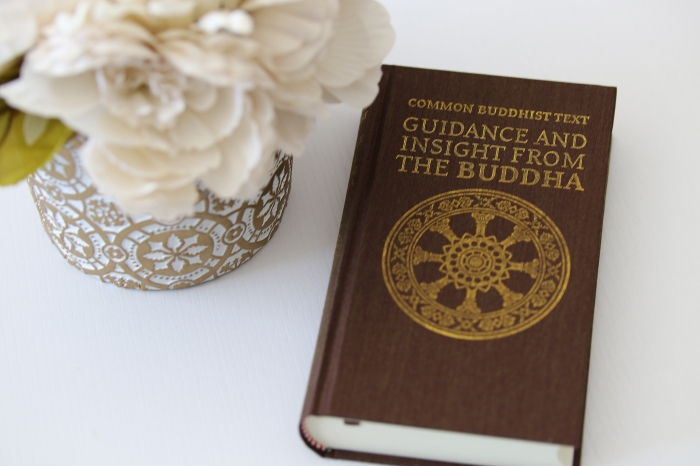 Chief Editor: Venerable Brahmapundit
Chief Editor: Venerable Brahmapundit
Editor: Peter Harvey
Translators: Tamás Agócs, Peter Harvey | Dharmacārī Śraddhāpa | P.D. Premasiri
G.A Somaratne | Venerable Thich Tue Sy
PART I: THE BUDDHA
CHAPTER 1: THE LIFE OF THE HISTORICAL BUDDHA
Conception, birth and early life
L.2 Prediction of his future greatness
This passage tells of how the gods informed a sage of the birth of the bodhisatta, and how he eagerly went to see him, and predicted his future attainment of awakening.
The seer Asita saw King Sakka[1] and the host of the Thirty gods[2] who were joyful and happy and in their clean garments, praising exceedingly, having held up a cloth.
Seeing the gods were pleased in mind and cheerful, having paid his respects, he said this there: ‘Why is the community of gods extremely happy? What do they celebrate holding up a cloth?’
Even when there was a battle with the demi-gods, the victory went to the gods (and) the demi-gods were defeated. Even then there was no such excitement. Having seen what marvel are the Maruts (the gods) elated?
The gods shout, sing, and play music; they slap their arms, and dance. I ask you the
inhabitants of the Meru’s crest:[3] Sirs, please dispel my doubt quickly.’
‘The bodhisatta, excellent jewel, incomparable, has been born in the village of the Sakyans, in the Lumbinī country, in the human world for our benefit and happiness. So we are jubilant, exceedingly pleased.
He is the best of all beings, the topmost person, the human bull, the greatest among all people. Roaring like a mighty lion, the overlord of animals, he will cause the wheel (of Dhamma) to turn in the grove named after the seers.’[4]
Having heard the utterance, he descended hastily and arrived at the dwelling of Suddhodana.[5] Having sat down there the seer said to the Sakyans: ‘Where is the young boy? I too wish to see him.’
The Sakyans then showed the child, the young boy, who was resplendent with glory, perfect in complexion, like burning gold burnished by an incredibly skilful smith in the very mouth of the furnace, to the one called Asita.
Seeing the young boy blazing like fire, purified like the lord of stars going in the sky, like the glittering sun released from clouds in autumn, he, being joyful, experienced abundant rapture.
The Maruts held in the sky an umbrella with many ribs and a thousand circles. Yak-tail fans with golden handles fluttered up and down; but the holders of the umbrella and the fans were not seen.
The seer called Kaṇhasiri (Asita), the one with matted locks, having seen (the young boy) like a golden ornament on a pale red blanket, and the white umbrella being held above his head, with gladdened mind, cheerful, received him.
Having received the Sakyan bull, examining him, he, an expert in marks and mantras, raised his voice with confidence: ‘This one, incomparable, is supreme among the two legged (humans).’
Then, reflecting on his own departure, being dejected, he shed tears. Seeing the seer wailing, the Sakyans said: ‘Surely, there will not be any danger to the young boy’?
Seeing the Sakyans unhappy, the seer said: ‘I do not see any harm destined for the young boy. Nor will there be any danger for him. This is not an inferior being. Be pleased.
This boy will reach the peak of awakening. Seeing what is supremely purified, having sympathy for the benefit of the great majority, he will turn the wheel of the Dhamma.44 His holy life45 will be widely known.
Little of my life here remains; then there will be death for me. I shall not hear the Dhamma of the peerless one; so I am afflicted, overwhelmed by disaster, miserable.
Nālaka Sutta: Sutta-nipāta 679–694, trans. G.A.S.
______________________________________________
[1] Sakka, king of gods as he is called, is the ruler of the group of the Thirty-three, a heaven in the realm of sensual desire. In the Vedic religion, he is known as Indra, a forceful and sometimes intoxicated god, but in Buddhism he is transformed into a virtuous heavenly king, called sakka, able or capable, understood to be a follower of the Buddha. Interestingly he is married to Sujā, from the opposing demi-gods!
[2] A round figure reference to thirty three gods.
[3] Meru, also known as Sumeru (excellent Meru) is the tallest mountain in the Indian mythology.
[4] This refers to the Isipatana grove in Varanasi, where the Buddha’s gave his first discourse.
[5] Suddhodana, the Sakyan ruler of Kapilavatthu, is the father of the bodhisatta.
No comments:
Post a Comment